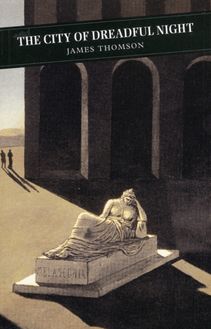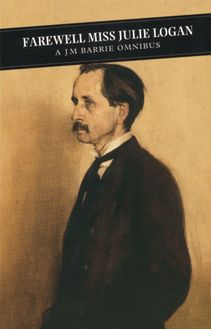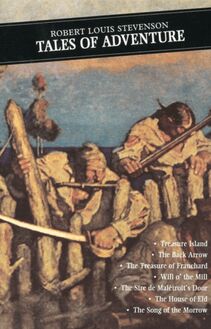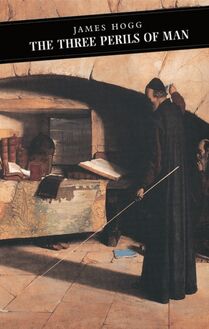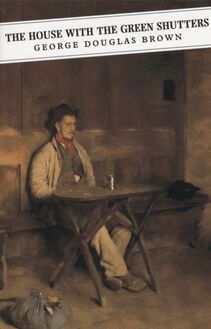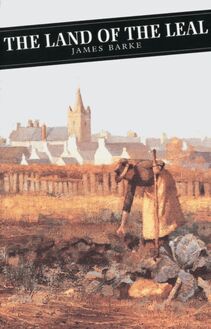Scottish Novels , livre ebook
399
pages
English
Ebooks
2010
Vous pourrez modifier la taille du texte de cet ouvrage
Obtenez un accès à la bibliothèque pour le consulter en ligne En savoir plus
Découvre YouScribe en t'inscrivant gratuitement
Découvre YouScribe en t'inscrivant gratuitement
399
pages
English
Ebooks
2010
Vous pourrez modifier la taille du texte de cet ouvrage
Obtenez un accès à la bibliothèque pour le consulter en ligne En savoir plus
Publié par
Date de parution
01 juillet 2010
Nombre de lectures
0
EAN13
9781847675590
Langue
English
Publié par
Date de parution
01 juillet 2010
Nombre de lectures
0
EAN13
9781847675590
Langue
English
Robert Louis Stevenson
THE SCOTTISH NOVELS
Kidnapped · Catriona The Master of Ballantrae Weir of Hermiston
Contents
Kidnapped
Catriona
The Master of Ballantrae
Weir of Hermiston
About the Author
Copyright
KIDNAPPED
BEING MEMOIRS OF THE ADVENTURES OF DAVID BALFOUR IN THE YEAR 1751 . HOW HE WAS KIDNAPPED AND CAST AWAY ; HIS SUFFERINGS IN A DESERT ISLE ; HIS JOURNEY IN THE WILD HIGHLANDS ; HIS ACQUAINTANCE WITH ALAN BRECK STEWART AND OTHER NOTORIOUS HIGHLAND JACOBITES ; WITH ALL THAT HE SUFFERED AT THE HANDS OF HIS UNCLE EBENEZER BALFOUR OF SHAWS, FALSELY SO-CALLED :
WRITTEN BY HIMSELF, AND NOW SET FORTH BY ROBERT LOUIS STEVENSON
Introduced by Jenni Calder
Contents
Introduction
Dedication
1. I set off upon my journey to the House of Shaws
2. I come to my journey’s end
3. I make acquaintance of my uncle
4. I run a great danger in the House of Shaws
5. I go to the Queen’s Ferry
6. What befell at the Queen’s Ferry
7. I go to sea in the brig Covenant of Dysart
8. The round-house
9. The man with the belt of gold
10. The siege of the round-house
11. The captain knuckles under
12. I hear of the ‘Red Fox’
13. The loss of the brig
14. The islet
15. The lad with the silver button: throu gh the Isle of Mull
16. The lad with the silver button: across Morven
17. The death of the Red Fox
18. I talk with Alan in the wood of Lettermore
19. The house of fear
20. The flight in the heather: the rocks
21. The flight in the heather: the Heugh of Corrynakiegh
22. The flight in the heather: the moor
23. Cluny’s Cage
24. The flight in the heather: the quarrel
25. In Balquidder
26. End of the flight: we pass the Forth
27. I come to Mr Rankeillor
28. I go in quest of my inheritance
29. I come into my kingdom
30. Good-bye!
Introduction
Kidnapped is an adventure story. But it is also a study of character, and that character relates to a particular time and place. The time is a few years after the Jacobite Rising of 1745, a time of painful disruption but also of reconstruction. The place is Scotland: the Lowlands, where life seems ordered and stable, and the Highlands, apparently anarchic and hostile.
Stevenson wrote Kidnapped in Bournemouth, confined to the south of England by his precarious state of health. Its publication in 1886 confirmed his reputation as a novelist. His Strange Case of Dr Jekyll and Mr Hyde , published earlier the same year, 1886, brought him popularity; Kidnapped brought critical respect. It is a delicately balanced book, expertly controlled, sharply focused, and written with an affectionate irony. It is perhaps the finest of Stevenson’s novels.
This adventure story has at its centre a young man who is not by nature adventurous. David Balfour is cautious and canny, his values shaped by a decent and limited upbringing. As the tale unfolds he experiences abduction, assault, shipwreck, destitution, and on several occasions is brought near to death. He is tricked, exploited and pursued as an outlaw. Yet he is not changed by these adventures. For him the ‘real’ world remains the secure territory of his belief in class and property, where authority banishes extremes and decency and hard work are rewarded. His encounter with a world of fierce loyalties and aggression, of treachery and violence, of raw emotion and idealism, does not reshape his views or values.
David’s adventure is framed by two symbols of authority and stability. It begins when he leaves his home, sped on his way by Mr Campbell, the local minister. It ends with David ‘at the very doors of the British Linen Bank’, ready to claim his inheritance. In between he encounters aspects of Scotland he had never imagined, and discovers that survival requires more than pragmatism and a belief in rational behaviour. He confronts people who behave in a way quite outside his own experience. He is drawn into a network of feelings and actions in which conventional morality is ineffective, or seen to be shallow.
It is like a nightmare. The innocent but shrewd David is almost killed by his Uncle Ebeneezer. He is rudely snatched away with the intention of removing him to the Colonies. He finds himself helping to defend the life of a Highlander with a price on his head. He nearly drowns, and then struggles for survival in an environment that he finds totally hostile. He is implicated in a murder. The Highlands that Stevenson describes are not romantically picturesque or heroically challenging. They are grim and merciless. Their inhabitants speak a language and behave in a manner that David does not understand. It is a country of savage mountains, of moors ‘lying as waste as the sea’, a fearful landscape ‘broken up with bogs and hags and peaty pools; some had been burnt black in a heath fire; and in another place there was quite a forest of dead firs, standing like skeletons’. Stevenson wrote this at a time when his contemporaries were increasingly admiring the scenic magnificence of the Highlands, but Stevenson clearly wrote his own experience into Kidnapped :
‘the rain driving sharp in my face or running down my back in icy trickles; the mist enfolding us like as in a gloomy chamber or perhaps, if the wind blew, falling suddenly apart and showing us the gulf of some dark valley where the streams were crying aloud’.
The terrain itself is a major character in the drama and underlines the division between Lowland assumptions and aspirations and Highland experience. Bridging the gulf is the other dominant character in David’s adventure, Alan Breck Stewart. The friendship between David and Alan Breck is at the heart of the narrative. Alan Breck is generous and charming, childish and conceited. David finds him both attractive and exasperating, and the reader shares this response. The man who after the fight in the round-house boasts of his own prowess, forgetful of the fact that David has in effect saved his life, reveals a damaging self-pride. Yet there is something appealing about his frank self-congratulation, more appealing, as David himself almost realizes, than David’s own priggish superiority.
The richness of the friendship is developed through the counterpoise of character traits and behaviour. Alan is colourfully heroic, but David is courageous too, and has already displayed an ability to get himself out of trouble, before he meets Alan. As Cluny Macpherson says of David, he is ‘too nice and convenanting’, but he also has ‘the spirit of a very pretty gentleman’. And the boastful Alan, who considers himself a very much prettier gentleman, concedes defeat with grace and admiration when Robin Oig outdoes him in the piping contest. As Alan and David flee through the heather, the one to return to the safety of the burgh of Queensferry, the other to escape from Scotland altogether, the balance of their relationship constantly shifts. The climax of both the adventure and the relationship comes in Cluny’s hideout on Ben Alder. As David subsides into a fever of exhaustion, ‘a … black, abiding horror a horror of the place I was in, and the bed I lay in, and the plaids on the wall, and the voices, and the fire, and myself’, Alan and Cluny gamble with greasy playing cards. When he recovers it is to find that Alan has lost all his money, and David’s too, to Cluny.
The quarrel that follows, each wrapped in his own pride, both polarizes them and highlights the reality of their friendship. Their reconciliation marks the beginning of the end of the story. The highest mountains and wildest moors are behind them. When they reach the Braes of Balquidder they are on the edge of a country that is more benign, and the presence of the landscape is less insistently felt. There are dangers still to be faced; the wild country has helped to protect them from the redcoats who are increasingly numerous as David and Alan make their way south. And even when David at last regains ‘the long street of Queensferry’ he is not yet safe, for he has to prove his identity as a loyal subject of King George. David Balfour has yet to ‘come to life again’. Happy as he is when the transformation is accomplished, it means also the inevitable parting with the outlaw and outcast who befriended and rescued him. Yet Mr Balfour is not quite the Whig and Hanoverian he once was. He and Alan part on Corstorphine Hill: ‘Neither one of us looked the other in the face…. But as I went on my way to the city, I felt so lost and lonesome, that I could have felt it in my heart to sit down by the dyke, and cry and weep like any baby.’ For Alan there is a ship that will take him into exile. For David the busy streets of Edinburgh, ‘a cold gnawing in my inside like a remorse for something wrong’, and the British Linen Bank.
The topography of David Balfour’s journey, from the Borders village of his birth to the House of Shaws, from Queensferry to the island of Erraid, from Appin to Ben Alder, from Rannoch Moor to the shores of the Forth, is much more than the configuration of place. It is a political and social map of Scotland in 1751. Through David’s responses Stevenson guides the reader’s attention to the divisions and contrasts that characterized the country and, in Stevenson’s view, continued to lie at the root of the Scottish character. The contrasts lie partly in the landscape itself. David leaves a pleasant village where ‘the blackbirds are whistling in the garden lilacs’. He approaches Edinburgh: ‘I saw all the country fall away before me down to the sea; and in the midst of this descent, on a long ridge, the city of Edinburgh smoking like a kiln.’ Around the House of Shaws are wooded hills and ‘wonderfully good’ crops. But in the Highlands the landscape is harsh and threatening, and the imprint of humankind much more fragile.
The wildness of the Highlands is not just in the mountains and the moors or the character of the people. It is perhaps even more forcefully in the lack of cultivation and the meagre dwe
